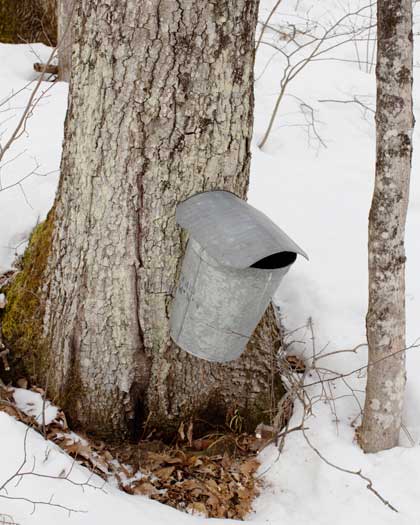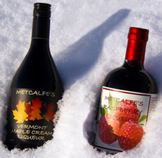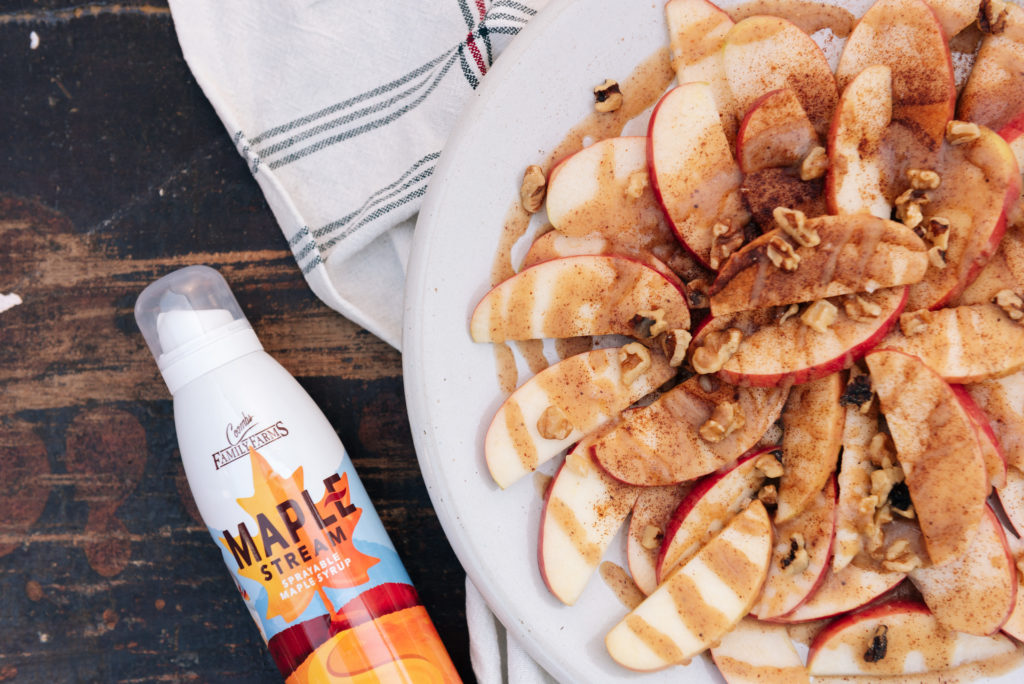
As you may know, we’ve started featuring an “Ask Arnold” series on the Get Real Taste the Truth Facebook page, because I wanted to know what you were curious about when it comes to making and using pure maple syrup. I have to say I’ve thoroughly enjoyed this weekly feature —it has been a wonderful way to engage with so many pure maple syrup lovers. The questions have been wonderful and they often make me think about what is at the heart of what I do.
I was recently asked several questions about climate change, as well as if sugar maples grow in the South. These are two big topics and there is a correlation between them so I thought I would give it a little more space here on the Get Real Maple blog. To help answer the questions, I decided to reach out to a colleague, Tim Perkins, Research Professor & Director University of Vermont Proctor Maple Research Center, and get his take. You’ll see his responses intertwined with some of my own thinking on these two topics. Please keep the questions coming and we’ll continue to discuss some of the topics more fully here on the blog.
Q. Why don’t maple trees grow in the South? Are sugar maples in the South as far as Florida?
Tim Perkins: Some maples do grow in the South — red maples in particular. However, the climate in the South really never gets cold enough for these trees to make syrup. The “short story” is that trees grow in certain locations based primarily on two factors: (1) climate (mostly temperature and precipitation) and (2) competition.
Although (sugar) maple trees could potentially have a wider distribution, other species are far more competitive for those sites due to being better adapted to the climate conditions. Sugar maple seeds have a chilling requirement for germination. I believe the answer lies somewhat within regional weather patterns – and New England weather patterns present the best conditions for producing pure maple syrup. In cold climates, maple trees store their starch in their roots for winter. When spring comes, the starch is converted into sugar, which flows upward from the roots through the trunk to feed the canopy. Maple syrup is produced when the sap moves up and down the tree because of a specific weather pattern — one where it freezes at night, thaws during the day and freezes again at night on a consistent basis. That type of weather pattern is more unlikely in the Southern states.
Q: How is Climate Change Impacting Maple Syrup Production?
Research by the Proctor Maple Research Center at the University of Vermont indicates the sugaring season in Vermont on average starts 8.3 days earlier and ends 11.6 days earlier than it did 50 years ago. The transition from winter to summer is shorter, representing approximately 10% of the sugaring season in Northern New England.
Tim Perkins: As I mentioned above it’s important to have a consistent stretch of alternating freezing, cold nights and warm days in order to make pure maple syrup. That’s the optimal situation and this alternating pattern typically takes place in later winter. Maple trees also rely on snowpack during this time to protect their roots from freezing.
 Climate change definitely will, and already has, had an effect on the maple syrup industry. We are fortunate that technological advances in sap collection have, so far, out-paced any losses we may have experienced due to the loss of season duration. In the long-term, we are unsure how climate change will impact the maple industry, or what our response might be. However, we are looking at several novel approaches to collecting sap, with the hope that we will be able to reduce the impacts of climate change on maple syrup production for as long as possible.
Climate change definitely will, and already has, had an effect on the maple syrup industry. We are fortunate that technological advances in sap collection have, so far, out-paced any losses we may have experienced due to the loss of season duration. In the long-term, we are unsure how climate change will impact the maple industry, or what our response might be. However, we are looking at several novel approaches to collecting sap, with the hope that we will be able to reduce the impacts of climate change on maple syrup production for as long as possible.
The old rule of thumb in Vermont was to tap maple trees on town meeting day (first Tuesday in March). Now if you’re not ready to go in the third week of February there’s a good chance that you will miss part of the crop.
Photo credits: Matt Armendariz (first image)


